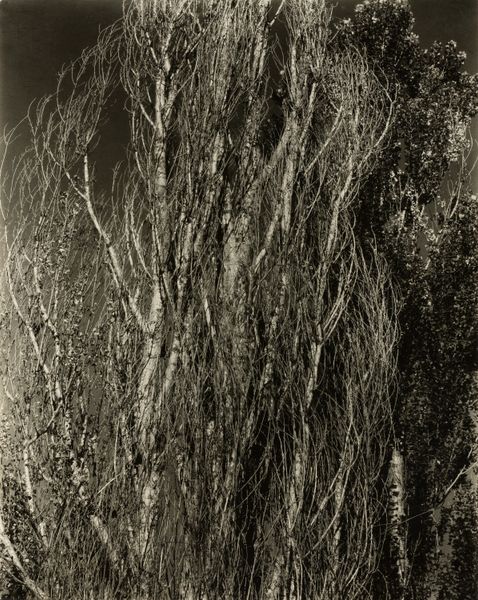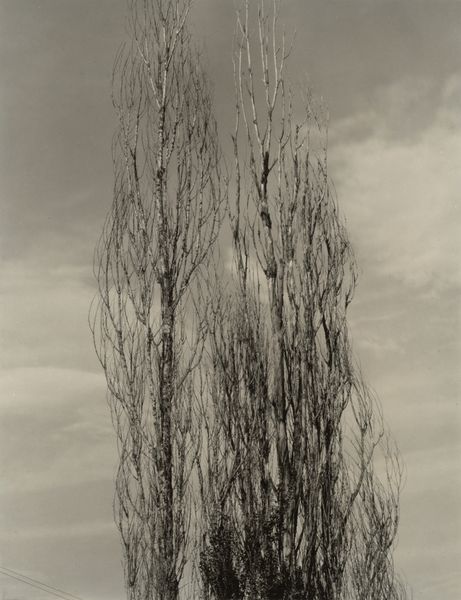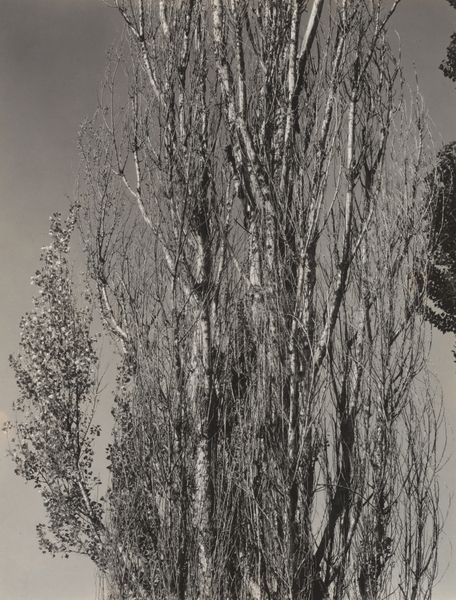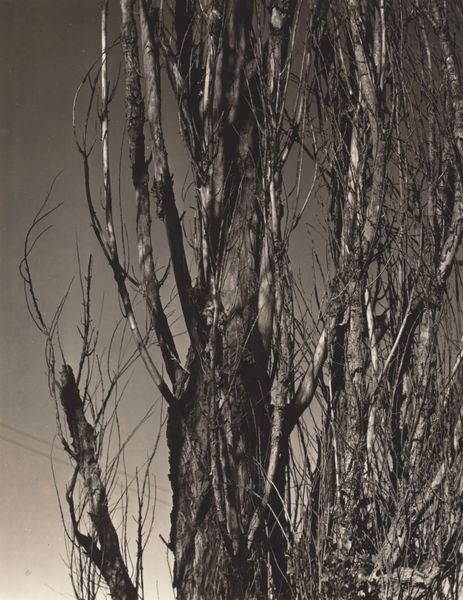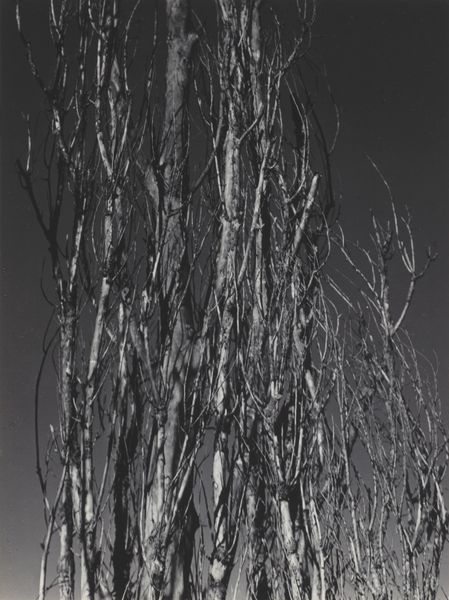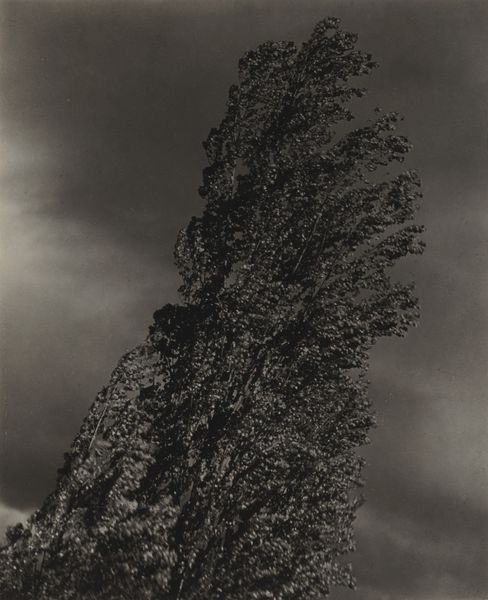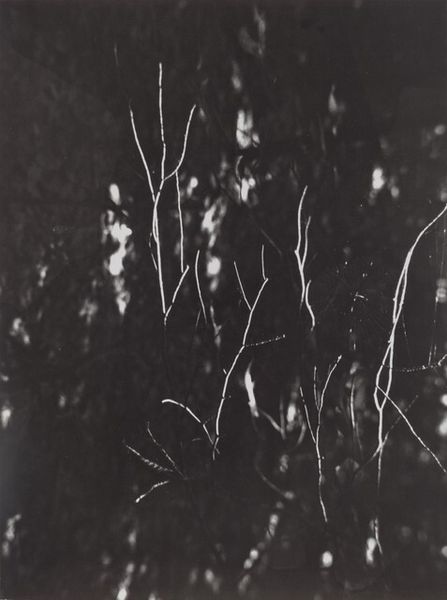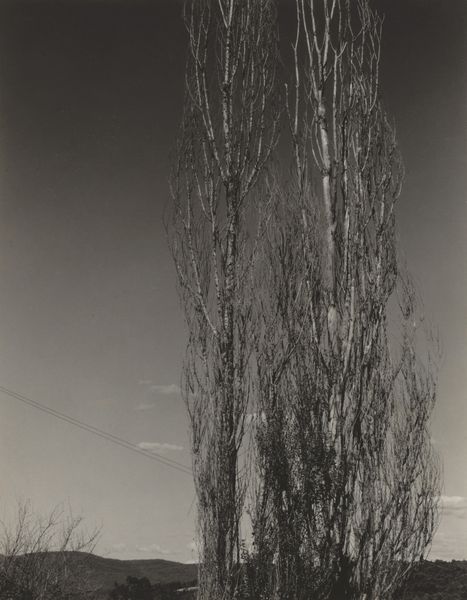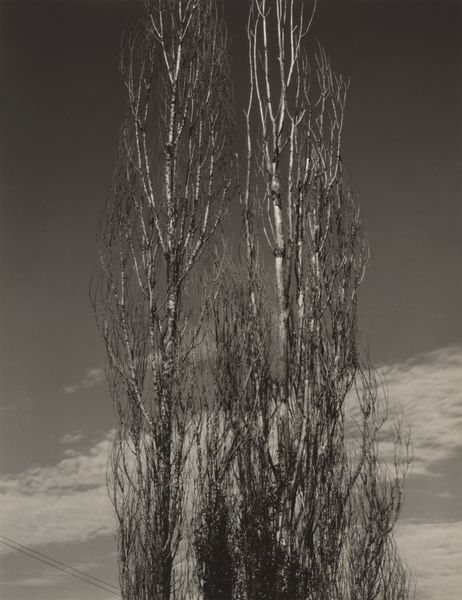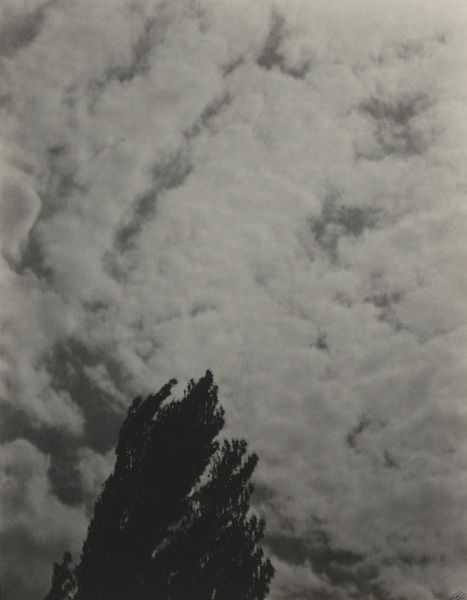
photography, gelatin-silver-print
#
organic
#
pictorialism
#
organic shape
#
landscape
#
photography
#
gelatin-silver-print
#
monochrome photography
#
line
#
modernism
#
natural form
#
monochrome
Dimensions: sheet (trimmed to image): 23.5 × 18.1 cm (9 1/4 × 7 1/8 in.) mount: 56.4 × 42.9 cm (22 3/16 × 16 7/8 in.)
Copyright: National Gallery of Art: CC0 1.0
Curator: I'm immediately struck by how skeletal these trees feel—it’s winter starkness, a quiet holding pattern of life. Editor: Yes, that resonates. We’re looking at "Poplars—Lake George", a gelatin silver print created in 1932 by Alfred Stieglitz. Curator: Stieglitz always saw the potential for profundity, didn't he? He found it, extracted it with his camera. But what do these particular bare branches, this monochrome palette…what do they symbolize to you? Editor: Well, poplars themselves have carried various symbolic weights through history. Often associated with mourning, or transition – perhaps here representing a letting go, a shedding. They almost resemble reaching arms, perhaps a reaching out to the divine, especially juxtaposed against that moody sky. Curator: I like that… "reaching." The texture, it’s not sharp and pristine like some modern photography, it’s almost… painterly? And given Stieglitz's championing of modernism, there’s this inherent tension between objective representation and something far more subjective, deeply felt. Editor: Exactly! Stieglitz’s Pictorialism sought to elevate photography to the level of art, emulating painting through soft focus and evocative compositions. Even in this image's simplicity, he suggests an inner landscape that mirrors the external one. A contemplation on the nature of nature, maybe? Or our relationship with it? Curator: Nature as a mirror—I’m quite fond of that thought! Makes me wonder if Stieglitz, through these trees, was exploring his own periods of barrenness, preparing, as it were, for rebirth? I find something hopeful, or perhaps peacefully resigned about the upward gaze. Editor: The cyclical nature of the seasons—mirrored in personal cycles. Interesting indeed. These poplars transcend their physical forms, and remind me how organic symbols can reflect universal human experiences: loss, hope, and enduring connection to the world. Curator: It's more than just a record of poplars; it’s an unveiling. A reminder that stillness often holds as much meaning as action. Editor: Agreed. And Stieglitz, once again, masterfully captures that subtle truth.
Comments
No comments
Be the first to comment and join the conversation on the ultimate creative platform.
